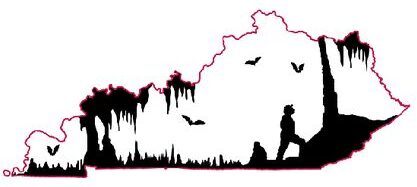Big Bat LiDAR Project
Ben Shinabery with QK4 Engineering and surveyor extraordinaire discusses the LiDAR equipment and data collection methods used in Big Bat Cave.
Ken Bailey and Ben Shinabery
Since our first ancestors began marking routes in caves with primitive tools or painting images with cinder, ash, and paint, man has been mapping caves. Some of the oldest traces of human history have been preserved by the constant climates underground. Through the collaboration between The Kentucky Karst Conservancy (KKC) and Qk4, Inc., the Big Bat Cave LiDAR project hopes to collect, map and preserve the fifty-sixth longest cave in the world. Instead of the cave preserving our history, it is our primary goal to digitally archive the cave to know better how to preserve its history. Cave mapping worldwide generally is collected by hand with compass and measuring tape. While new handheld electronic distance meters are being used in cave mapping they are based on the compass and tape survey methods collecting one data point at a time. Referencing those data points can be tedious and provide only a small subsample of the cave footprint. Cave mapping using LiDAR scanning enhances this process by collecting millions of data points while referencing them horizontally and vertically in 3D space.
LiDAR stands for Light Detection And Ranging. This LiDAR 3D scanning technology analyzes real world environments to collect data in a point cloud. Software is used to convert the data and construct digital 3D models of the existing features. For over a year, the KKC has been mapping Big Bat Cave in Breckenridge County, Kentucky with LiDAR data collection. We continue to develop our process in collecting and analyzing the geospatial data and gaining valuable experience below the surface. The Kentucky Karst Conservancy (KKC) owns the land rights for the Mushroom Entrance to Big Bat Cave. The KKC maintains access to the Natural Entrance through a good working relationship with the landowner. Qk4, Inc. has provided the LiDAR technology and has created the digital subsurface mapping.
One of the project goals is to expose students to new innovative ways of exploring the world around them. The KKC continues to offer an open invitation to students and staff at the University of Louisville Geography Department. Many have attended mapping trips. Students from Jefferson Community College and Southern Polytechnic State University in Georgia have also worked on the project. We encourage these students to reference this experience on the resumes. Any student that participates has full access to the data set. With help from local high school geography students, the KKC has plans of 3D printing portions of the digital cave model. To this point, the project has been self-funded and all personal cave equipment has been purchased, borrowed, or hand-made by the participants. The research possibilities in Cave LiDAR mapping are just beginning to be explored. Caves have been a preserved record of our past history and climate conditions. This LiDAR data set may shed insights into these paleo-climates and help the KKC preserve the story of Big Bat Cave. 